#apocalpytic
Text

TWD and the zombie apocalypse started in 2010 so it makes sense the new WTC was never finished in their universe.
#remembering Fringe's S3 Finale with the alt future where it was finished an irl was still under construction#The Walking Dead Dead City#TWDDC#People are a Resource#post apocalpytic#ruins#decay#NYC#skyline#Danny watches The Walking Dead Dead City
24 notes
·
View notes
Conversation
Me: oh people are talking about that new asoiaf show lmao I totally forgot that was even a thing
Me: oh people are saying two girls in the premiere had kind of a fruity vibe? huh wonder who they—
Me:
Me: [HYSTERICAL LAUGHTER]
#hotd#hotd spoilers#hotd book spoilers#I KNOW EVERYTHING ABOUT THE DANCE OF THE DRAGONS I KNOW HOW THIS GOES#Y'ALL HAVE NO IDEA HOW MUCH THE ADAPTATIONAL CHANGE OF MAKING RHAENYRA AND ALICENT BE CHILDHOOD FRIENDS TO NEMESIS#WHILE SHOWING THE FULL DETERIORATION OVER THE TWENTY FUCKING YEARS OF BUILDUP TO THE APOCALPYTIC CIVIL WAR#MAKES THIS MY EXACT NONSENSE
40 notes
·
View notes
Text




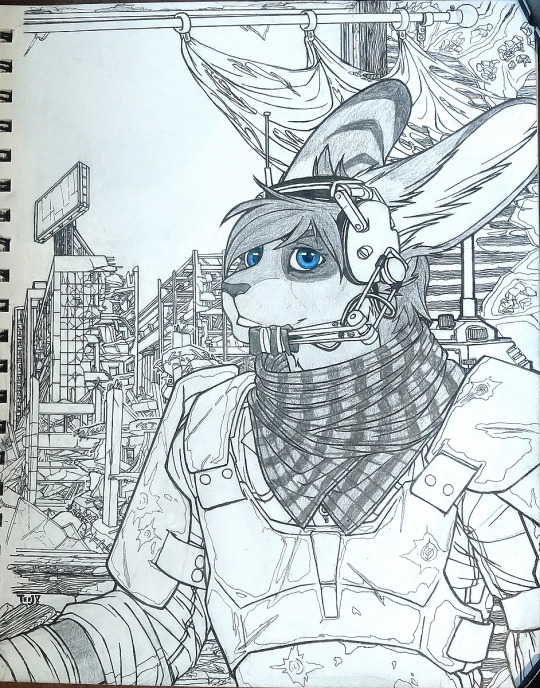



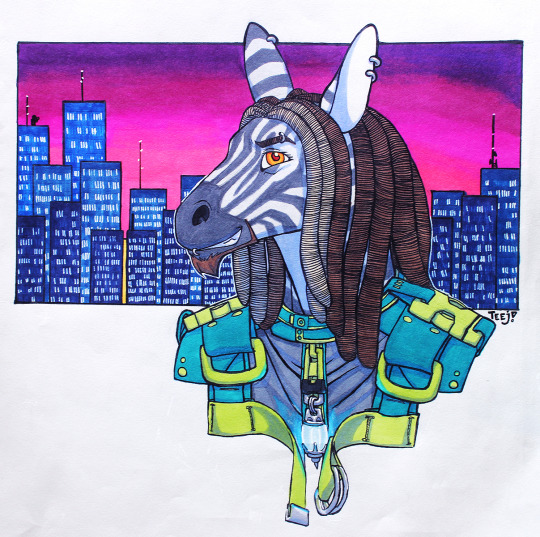



#art#anthro#anthropomorphic#furry#furry art#protogen#fox#bunnyfox#laiket#wolf#zebra#dog#leopard#post apocalpytic#post apoc#traditional art#markers#nature#city#ruined city#ruins#opossum#stoat#lux#greyfox#nerf gun
26 notes
·
View notes
Text
We waft outside. The late summer light bleeds on and on. My parents share a bottle of wine and don't notice that I drink lemonade instead, or that I cannot finish my pancakes. We sit on the back porch. They wave at neighbors, trot to the fench to chat, wiping sweat off their foreheads. We make plans to stay, to run, to hide, to live normally. We decide to stay vigilant, then argue about whether vigilance is a strategy. And all the while the light slants lower and lower, bathing us in a gorgeous, smouldering glow, my heart slowly cracks. The deep orange-gold of the sun is pure nostalgia. An antique radiance already sheds itself upon this beautiful life we share. I grow heavy, rooted in my lawn chair. Everything I say and everything my parents say, the drift of friends, the tang of lemonade, the wine on their tongues, the cries of sleepy birds and the squirrels launching themselves without fear in the high tops of the old maples and honey locusts, branch to branch, all of this is terminal. There will never be another August on earth, not like this one; there will never be this sort of ease or precision. The birds will change, the squirrels will fall, and who will remember how to make the wine?
— Future Home of the Living God (Louise Erdrich)
#book quotes#science fiction#apocalpytic fiction#dystopian fiction#louise erdrich#future home of the living god#family#description#light#sunset#sun#senses#taste#sound#relationships#friends#friendship#august#nostalgia#loss#change#memory
2 notes
·
View notes
Note
📚 ask: 1, 50, 77
1. a book that is close to your heart
the left hand of darkness by ursula k. le guin <3
50. a book that made you cry a LOT
books generally do not make me cry but i suppose harrow the ninth made me occasionally let out a pained groan as though i'd been punched in the chest
77. a book so useless that you could use it as a coaster
the three body problem by liu cixin
#actually wish the premise of the three body problem wasn't so sick so that it wouldn't be such an apocalpytic bummer that the execution bad#asks
3 notes
·
View notes
Text
World Building June Day 22 - Fun across Heims
Fun is something a lot of wastelanders don’t really consider due to the pressing needs for survival. That said it isn’t uncommon to find survivors in settlements passing time with things such as books, old tabletop games, or if the settlement is lucky enough, electronic entertainment (movies, radio, even rarely some games). Fun is vital for any survivor who has taken some downtime, at least as a means to help keep them anchored and escape from the wastes for a few minutes.
For Sanctuaries much of the old entertainment and fun from pre-war still exists, because of course it does in the rich people's safety bunkers.
0 notes
Text
OH RIGHT fallout new vegas free in epic games until june 1 pls pls go get it
#sometimes u just feel like being a cowboy in a post-apocalpytic wasteland yknow#fallout new vegas#fnv#miko talk
1 note
·
View note
Text
guilty gear strive is bad because they took away that man’s cat ears
#world's worst war criminal who caused nearly two centuries' worth of war and death and apocalpytic destruction is a pathetic little catboy#i will never let them forget that.#ramblin
1 note
·
View note
Text
I'm in the middle of cr ep 40 and fsljdflkf it's so intense aaaaa
like I usually try to finish an episode by the end of the night but this one is just so. hoo boy. I think I need a breather before I get back into it tomorrow.
#ignore me#maddie liveblogs critical role#there's so much!!!! aaaaaaaa#insane dragons! bad skulls! death and dying everywhere! aaaaa#grog and percy are both being super sus and I don't like whatever's going on#particularly grog???? percy I get being sus. but grog??? he's being Super Sus#and just the whole dragon fights!!!! hhhhhh that was so intense omg#it was so hard to listen at work bc I was just. inwardly shrieking the whole time aaaa#normally I live for intense episodes but this was just. a bit too apocalpytic? oof#I saw tvtropes compare the aftermath of the dragon fight to 9/11 and I had that exact same thought too#like. just listening to it took my breath away for quite a while#anyways. hhhh.
0 notes
Video
youtube
I continue levelling my bleed Blade Arc Warder. I ran into a little problem with Ulgrim and had a viewer in my chat, woohoo!
0 notes
Text
The themes of NieR Reincarnation
A post about the recurring elements of Drakenier and the use of branching timelines as a storytelling device. I'll be discussing spoilers for basically every DoD/NieR game.
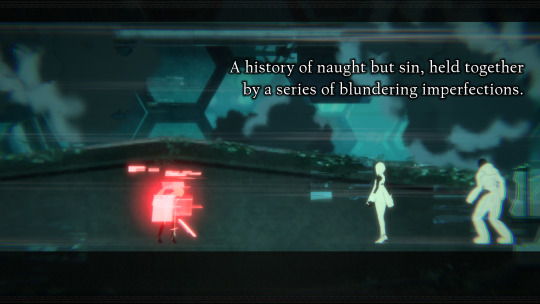
Records
A somewhat understated recurring motif of the Drakengard/NieR series is the idea of stories or memories of humanity being stored in some massive archive.
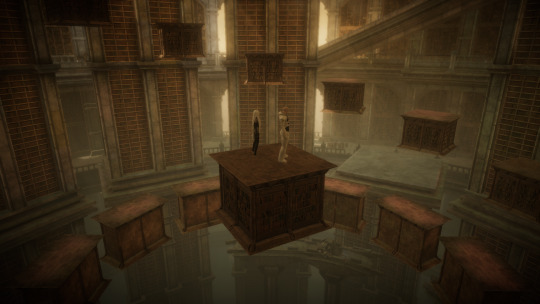
It's an idea that first entered the series in NieR Gestalt/Replicant. Early drafts of the game focused on the idea of a world built out of stories and fairytale characters, and while most of this was cut, some remained in the Forest of Myth area.
Following NieR's obsessive love of hopping between different game genres, the story here is delivered through prose/text adventure segments. There is a sense that this area of the game exists as prose, with the characters slightly aware of narration - narration which absorbs the characters until you find a way to escape. Eventually you find out - it's rather cryptic in the actual game, but spelled out explicitly in Grimoire NieR - that it's a huge computer system storing records of the deceased humanity.
In your second visit to the area, the story focuses more on distant history, that all these stories are fragments of memory of the lost pre-apocalpytic world. You encounter a Gestalt (human soul extracted from body) that is eating the memories stored in the tree, and kill it, and for Nier and co., this is enough - but for the player, you really don't know half of what is going on.
In the story The Lost World, which was adapted for the additional Ending E added in the Replicant remake, Kainé returns to the Forest of Myth and finds the computer system expanding. She fights clones of herself before eventually speaking to a mysterious administrator and descending into a virtual world that seems like a corrupted version of her memories. But she's able to connect to her memories of NieR, Emil and Grimoire Weiss, and through that connection cause a kind of timeline collapse effect that allows her to resurrect Nier. Terms from DoD3 such as 'singularity' come back again.
youtube
In NieR Automata, the idea of the legacy of humanity becomes increasingly central. While the androids believe they are reclaiming Earth for humanity, the Machine Lifeforms' motivation is in large part driven by their efforts to pore over the records of humanity and learn how to evolve their condition, even by blind imitation. Many of the different Machine Lifeforms you encounter are shaped by their interpretations of human society. The motif of human buildings recreated in white blocks recurs at certain points.
In the final sequence of the game, you climb a tower, and inside it visit simulacra of locations from the Replicant/Gestalt. You learn that the machines have infiltrated the androids' network and downloaded basically all the information the androids have, including all their records of humanity. When the machines' 'Ark' is launched into space, it carries their memories and consciousness in data form.
The YoRHa: Dark Apocalypse raid series in FFXIV continues this idea of obsessive, blind reconstruction. The machines you fight here are now all the more explicitly connected to the apocalyptic shit in DoD; they have also been frantically creating duplicates of YoRHa android 2P, the Bunker and so on in corrupted form. Although the story here has mostly other interests, it's another recurrence of the idea of trying to recreate things that were lost.
Along with this idea of the archive comes the idea of preservation of that archive. Whether by accident or deliberate attack, the survival of the archive is not guaranteed.
This is all absolutely central to what Reincarnation is about.
Branches
The Drakenier series has played around with branching narratives pretty much from the start. It's somewhat infamous for it in fact - did you know that NieR is actually a spinoff of ending E of Drakengard, the one where you appear over Tokyo and have to do a rhythm game? Yeah, so...
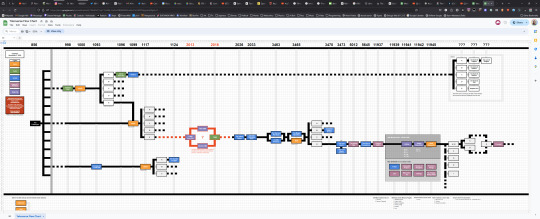
Most games are fairly cagey (ha ha) about the mechanics of these branches. Indeed, although we speak of branches, the structure of these games is not really a branching one like a visual novel. The branches and 'endings' are usually unlocked sequentially.
Drakengard/Drag-on Dragoon (DoD1) is probably the closest you get to a traditional branching structure. You can unlock routes in certain missions by fulfilling certain conditions. The exact logic of these branches is not really explained - you can go back to a point before you recruit a party member and get a different branch where they're present for example. That said, it's not like a visual novel where you can be 'on' one branch or another - you can always jump to any level from any timeline.
This oddness of the branches is also lampshaded a little more in DoD3, the game that is most explicit about the nature of the branching timeline. DoD3 is, from the player perspective, a linear game. After you complete the first 'ending', you unlock new levels that appear at earlier points in the timeline, and diverging branches appear. In the later branches, the logic of the world is starting to break down. Party members who you'd recruit later in the story are in your party much earlier, in some cases suffering from amnesia, the implication being that it's an effect of the Flower's corruption.
The game is intermittently narrated by a character called Accord, an android 'Recorder' whose job is to document all the different versions of the story for an unknown party. Accord isn't supposed to intervene in the story, though she occasionally talks to protagonist Zero, and in the final D route, she decides to break the rules and save Zero. Otherwise, she's responsible for 'sealing' branches where it seems the world cannot be saved.
This is Accord:
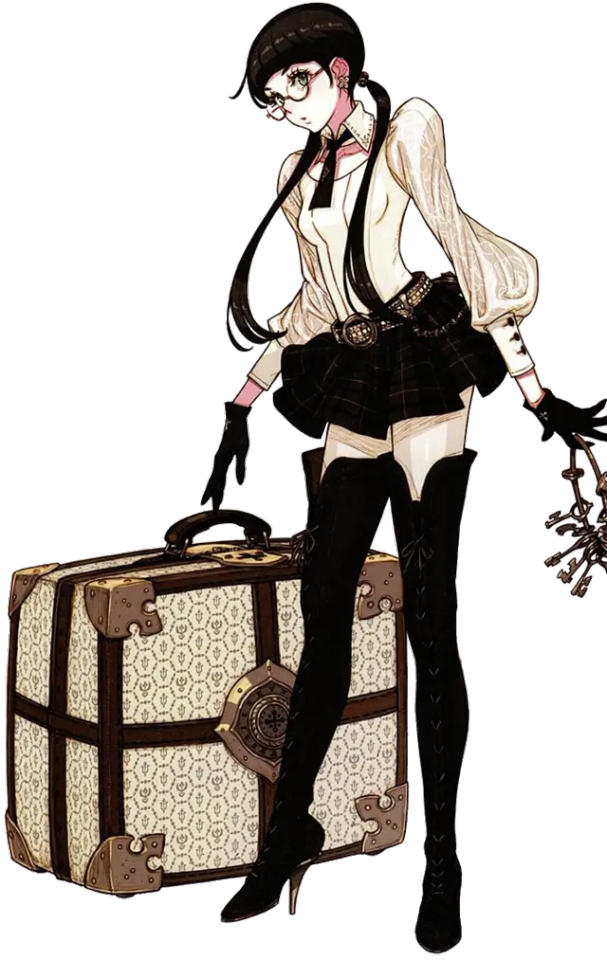
The final cutscene of DoD3, available only after you beat the ludicrously difficult rhythm game that is the 'final song', shows a bunch of other Accords appearing and talking about what a mess this all is.
Accord's other role in the game is to sell weapons. Another series tradition running back to DoD1 is the 'Weapon Stories'. In each game, you can collect weapons, which can be upgraded through a series of four stages. Each stage unlocks another part of a story. These stories tend to be quite brief - each entry is at most a short paragraph. They also, particularly in the DoD games, tend to be comically grimdark.
DoD 3 came out after NieR Replicant/Gestalt, but in every game since then, there have been cryptic mentions of Accord. In Automata she's mentioned in a note as a weapons seller; in the updated version of Replicant she is mentioned as visiting Nier's village while the party is away on her adventures, and you see a documention that mentions the 'Accord Corporation' supplying magic weapons.
OK, so, put a pin in that, we'll come back to her later.
The side material commits further to the branching idea. The original Drakengard is established to follow from the DoD3 Story Side novel, while Branch A gives rise to the Shi ni Itaru Aka manga and the DoD 1.3 novel. The YoRHa stage plays spawned alternative versions, namely YoRHa version 1.3a and Shōjo YoRha version 1.1a, with the gender of the casts flipped. YoRHa 1.3a also has Accord in it. The anime NieR Automata ver. 1.1a also presents an increasingly diverging version of the events of the game - notably, Adam turns into a multi-armed monster.
DoD2, something of the black sheep of the franchise, was originally written to follow DoD1 ending A; later it was retconned to belong to its own branch. Just 'cause.
With me so far? ...no? Yeah, that's fair. You can read about all the details I've gathered so far here, but in short, there are lots of timeline branches, and multiple versions of several stories with small or large divergences.
Reincarnation
NieR Re[in]carnation is a gacha game that's been running for the last three years, and is going to be shut down at the end of April. At the time it came out, it was acknowledge for having unusually nice graphics for a mobile game, but rather desultory, grindy, repetitive gameplay. Which remained true throughout the game's life, so I can't exactly recommend playing Reincarnation, especially at this point.
But! I would definitely say it's worth your time to dig up the story on Youtube/Accord's Library if you're into NieR stuff. I won't be going into all the ins and outs of the story and how it all fits together in this post, but I am gonna talk about how it's structured.
NieR Reincarnation places you in a vast stone city called the Cage, calling to mind the environments in Ico. At the outset, you play as a young girl travelling with a weird ghost-like creature called Mama, tasked with restoring the memories stored in objects called 'dark scarecrows' which are being subverted and corrupted by black birds which form into various monsters.
Within each chapter of NieR Reincarnation, you get a short story in four parts, presented in a kind of cutout style, which are the four segments of a weapon story. You collect the weapon and the character.
The Cage is shaped by the content of the weapon stories somehow bleeding into the simulated setting. A character's memories can be used to restore the stories to their proper course. It is possible to interfere in small ways with the worlds of the stories.
The corruption of the stories tends to involve subverting characterisation to make them crueller, more prone to random violence etc. - or points when a character could be threatened in a narratively unsatisfying way. For example, a peace-loving runaway prince could be turned into a warlike king.
Over the course of the first arc, you discover that the girl you are playing is actually a monster who has taken the form of a human girl and, regretting it, wants to give her her embodiment back. The second half of the arc has you playing the girl trying to reunite with her monster friend; at the end, you get her own backstory as a victim of brutal prejudice. After all is said and done, both characters transform into weapons, which Mama picks up and hides away.
The second arc, The Sun and the Moon, deals with a brother and sister from present-day Tokyo. Both of them have been transported into the Cage by more of the weird ghost thingies, to participate in a strange ritual that is allegedly going to restore the Cage. The rules are highly mystical - a significant sacrifice is needed.
In the most recent arc, The People and The World, the characters all emerge from their stories as the Cage becomes increasingly corrupted. We finally get the long awaited point where these characters can interact with each other, and advance the stories from a series of tragic vignettes to something more. At the same time, we get a lot more allusions to other games in the series - from the Lunar Tear room where Emil memorialised Kainé and later 9S memorialises 2B, to a brief appearance Devola and Popola.

There's even a nod to Yoko Taro's other terminated gacha game, SINoALICE, which is going to be made into a movie oddly enough. There's a wry nod to the game being shut down.
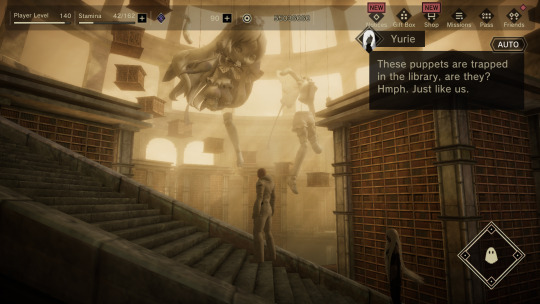
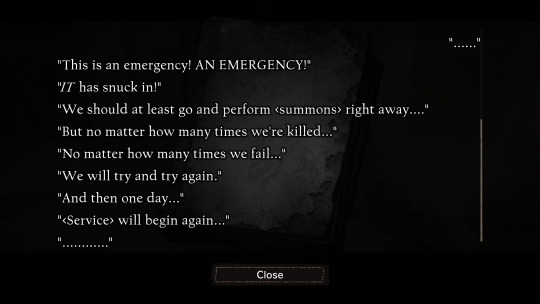
And in the most recent chapters we find out that the Cage is actually a server on the moon containing records of humanity - 10H from A Much Too Silent Sea is one of the main characters. 'Mama' is actually the Pod tasked with overseeing the archive, and wiping 10H's memories whenever she learns too much - though it seems at some point 10H learned the truth and affirmed that she'd protect the archive anyway and they stopped wiping her memory.
Over the course of the chapter, 10H helps the gang make their escape from the moon through the androids network, to Earth. But when they get to Earth, they find themselves in a strange white city more resembling the Cage.
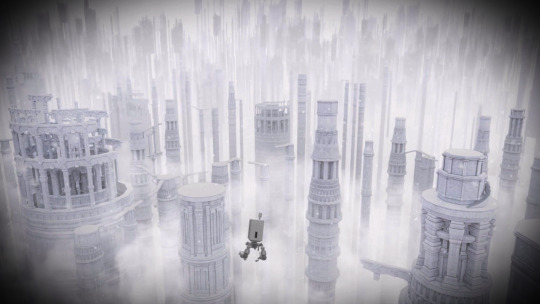
We'll finally get some answers, maybe, later this month. Anyway...
So, these records come from multiple diverging timelines, and they take the form of weapon stories. You have a unity of the ideas of character - weapon - memory - world. A record is simultaneously a tragic series of events, a person who can manifest inside the Cage itself, a simulated world which other people can visit, and a weapon.
In addition to the main storyline chapters and 'character stories', each character is associated with two additional 'EX' storylines, termed Dark Memories and Recollections of Dusk. Each one is a much more substantial narrative than most in the game.
Some of these EX stories clearly take place in different timelines to the first ones we encounter. Akeha's story, for example, takes place after her death in the original version. For the brother and sister from the Sun and the Moon arc, originally from present-day Tokyo, their Dark Memories take place in the backstory to NieR Gestalt/Replicant - the period where humanity is dying out to White Chlorination Syndrome and fighting monsters called the Legion. In this one, before the siblings could be torn apart by family drama and resentment, the apocalypse happens. Both of them end up coming into their own as heroic fighters. In the finale arc, the characters learn a bit about these alter egos, and it's made very explicit that this is a different timeline.
The monster Levania's Dark Memory is especially weird. It's the story of a salaryman who plays a monster called Levania in an MMORPG. His MMO character inspires him to live more bravely in the real world, and his life seems to be improving, but he is murdered by a jealous coworker. He wishes for reincarnation as he dies - classic isekai stuff. But the connection to the Levania you encounter in the main story is far from clear. Are all versions of Levania derived essentially from this man's tulpa?
The nature of the 'enemies' attacking the Cage is still not yet clear. They take the form of black birds. The birds are given a small amount of dialogue and characterisation, and they seem to not be malicious, just confused. The girl from the first arc in particular tends to interact with them sympathetically. However, they seem to be connected with the mysterious 'God' who was trying to destroy the world in DoD1, and the Angels and Flower of DoD3.
The birds are able to gathe together to manifest much larger monsters, the largest being giant elk and fish called Cursed Gods. During the finale arc, one of these becomes something that resembles the Mother Angel from DoD1 - and yes, there is a rhythm game - though mercifully a pretty easy one.
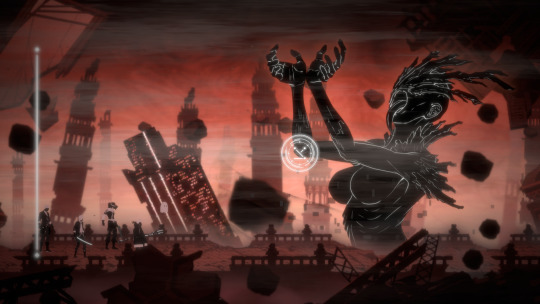
In the same arc, the character Yurie, an AI city overlord with grandiose ambitions and a loathing of imperfection attempts to download the entire history of humanity from the Cage and become a more perfect being. She succeeds, only to find the answers disappointing...
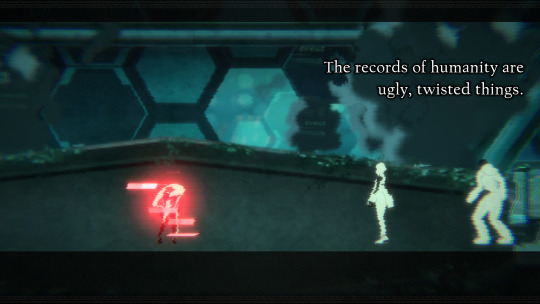

This is perhaps the closest thing we ever get to an explicit statement of what all these stories and histories add up to, but despite all this, the throughline is very strongly that these stories are essential to preserve. NieR characters exist in small groups, and it is their intense connections to these others, their treasured memories of travelling together, that motivate them to fight to preserve that thing, even if the results are destructive.
Similar themes emerge for example in Noelle's Recollection of Dusk story, which sees her travelling to preserve a place valued by her sister in crystal. And they also connect to the theme of sacrifice - the recurring ending device where the player must delete their save data in order to help someone (something echoed in Hina and Yuzuki at the altar of the sun and moon, or Levania and Fio). It's perhaps fair to say that nothing is more valued in the world of Nier than memories of a treasured person.
What about Accord? She has in fact made a brief cameo in Reincarnation already...
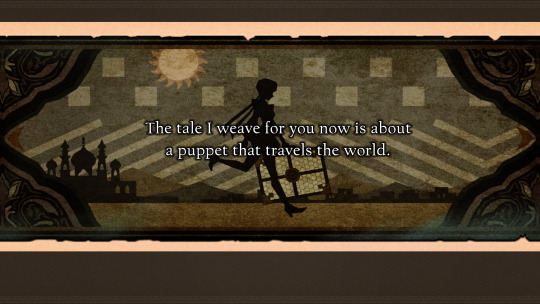
It seems incredibly likely that Accord originates from the Cage, and the accumulation of weapon stories is accomplished by androids like her. Definitely in the fandom there's a lot of excitement for the idea that Accord - something of a fan favourite - will show up at Reincarnation's ending.
So mystery solved, the Cage exists in the world of NieR Automata on the moon server? Not so fast - there are various discrepancies which seem to suggest that the world of the Cage exists in a separate branch than the one we see in Automata. For example, the androids are aware that the humans are dead and what remains on the moon is a huge archive of their memories; the humans seem to have survived much longer; 2B and 9S seem to have died in different circumstances. There are other oddities which fans have compiled.
And yet, despite being a divergent timeline with a much older point of divergence, some things seem to be fixed. There is still a YoRHa, still a 10H deceived about being on the moon, still a 2B and 9S.
One popular fan theory is that Reincarnation belongs to the NieR Automata anime (ver1.1a), since Adam turns into a monster there similar to the ones in Reincarnation. The black birds are reasoned to be the Machine Lifeforms, since we know they come from Earth. I'm not 100% sure of this, but maybe?
Anyway, that's basically the gist of it.
A story told through permutations
In many fictional series with a shared universe, there is an effort to maintain a consistent shared universe, so all the different events can fit into a timeline with understandable cause and effect and characters living out their lives. Even when this proves impossibly unwieldy, as in comic books or Star Wars, the attempt is made.
NieR does not really take this approach. The creators leave many details of the world, such as place names, incredibly vague - the focus is always on telling an emotional story with characters. There is, as we've seen, an almost gleeful willingness to declare another new timeline.
There is also a certain aspect of repetition, or more kindly reiteration - the same core character dynamic revisited and retold in various forms. (2B9S gets the worst of it). A character is something like a principle or ideal, and each story shines another light on that 'core'. In the earlier storylines of Reincarnation, it became quite frustrating because it seemed like e.g. the character event stories were just rehashing the same idea rather than advance the story.
However, the more accustomed I get to this style of storyline, the more I think this kinda works. It is of course quite similar to the ideas proposed towards the end of Homestuck, or to time loop stories - the idea of varying the contingent circumstances to try to better illustrate the core characterisations and dynamics.
Yoko Taro has talked about how he constructs stories from a very simple idea, typically a moment of high emotional impact at the climax, and then works backwards to figure out what sort of story could lead into that. In Reincarnation, each character gets fairly limited time to establish themselves, so they tend to be defined in terms of a pretty narrow high concept.
For example, Akeha is an assassin in a vague historical Japanese setting; her introductory story sees her decide for the first time to disobey her lord after she finds another person who has been treated as instrumentally as her. Most Akeha stories focus on her assassinations, her relationship to her retainer, and what she sacrifices to perform the duty. Only her Dark Memory lets us see an Akeha who has escaped that life - it's a simple story about preparing food, but that's given meaning by all the other Akeha stories.
Hina and Yuzuki are defined by the same traits in their flashy scifi Dark Memory stories as in the more mundane ones - Yuzuki the quiet outcast, Hina the self-sacrificing star. Fio is defined by kindness in the context of abjection, seeing the good in monsters. Levania stories are about the desire for escape and transformation. Argo is always a shitty dad who only feels alive while climbing mountains.
The staticness of these characters seems on some level to be the point - in that we are told in Hina and Yuzuki's story that the mechanism of the Cage is to sort characters into 'Light' and 'Dark' natures, and push them to inevitable conflict, even if they try to break free. In the final arc, the characters seem to finally approach some resolution as they leave their contexts behind. Given the themes of Automata in rejecting an inevitable tragic fate, similar movement may be at work. There's an ambiguity - the need to hold on to even tragic histories, vs the wish to not be confined to them. (Perhaps it's significant that it's called the Cage...)
With so many balls in the air and so many mysteries still unanswered, it's hard to figure out how Reincarnation can deliver a satisfying resolution in just one remaining chapter, but the final arc has been really cooking so who knows! But I'm also coming to appreciate it as a kind of broader lens to notice all these recurring elements and tie them together.
Stories about alternate timelines and branching narratives are very common nowadays, particularly as a tool for revisiting a nostalgic franchise. Something something effect of the fan wiki era. So I can't exactly say NieR is doing something completely unique, but I do think there is something to its fragmented, collage-like approach to putting together story elements. There's something quite honest about it - an ability to say 'these details aren't important'.
Yoko Taro always talks about himself as an entertainer rather than an artist. And probably it is true that a lot of this eemerged from an iterative design process rather than being the plan from the beginning (the first draft of NieR envisioned it as something closer to what SINoALICE ended up being, about a world of fairytale characters; NieR Automata began life as backstory for an idol project). There's definitely a strong sense that it's being improvised. And yet despite that, it does feel like it is cohering into some sort of picture, that there is an artistic throughline to all this.
Or perhaps that's just the effect of getting way too invested in something. I won't deny that NieR brings out the fan in me.
Anyway Accord had better show up next month. Guys. You've been teasing us for so long...
#nier#nier replicant#nier automata#nier reincarnation#drakengard#drakengard 3#computer games#Youtube
120 notes
·
View notes
Photo




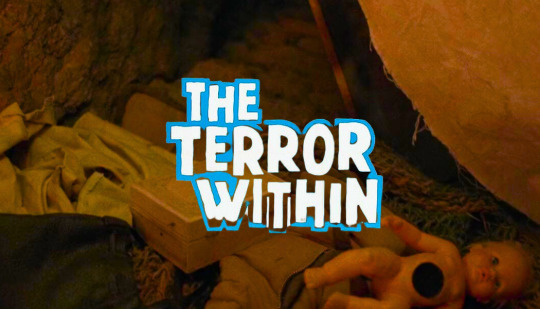
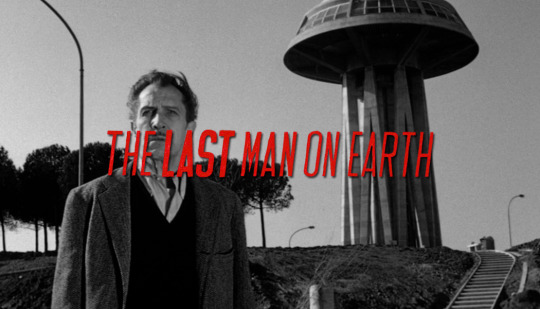
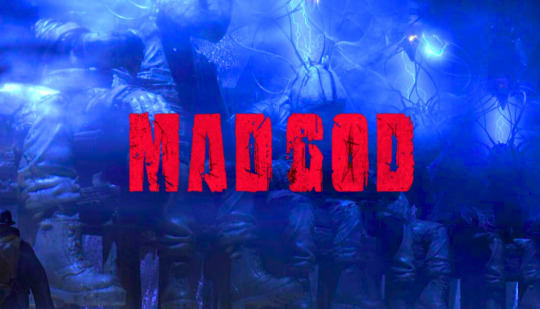
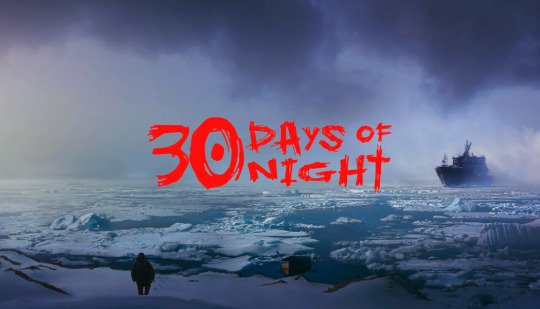
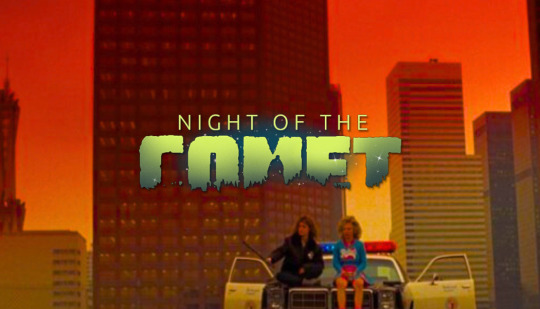

horror sub-genres • apocalyptic horror
apocalpytic horror is a subgenre in which the earth's (or another planet's) civilization is collapsing or has collapsed. and the surviving characters are forced to endure threats and remain alive.
#horror sub-genres#horror#horror movies#apocalyptic horror#i am legend#a quiet place#cloverfield#the void#the terror within#the last man on earth#mad god#30 days of night#night of the comet#the road#moviesedit#filmedit#horroredit#cinema
362 notes
·
View notes
Text
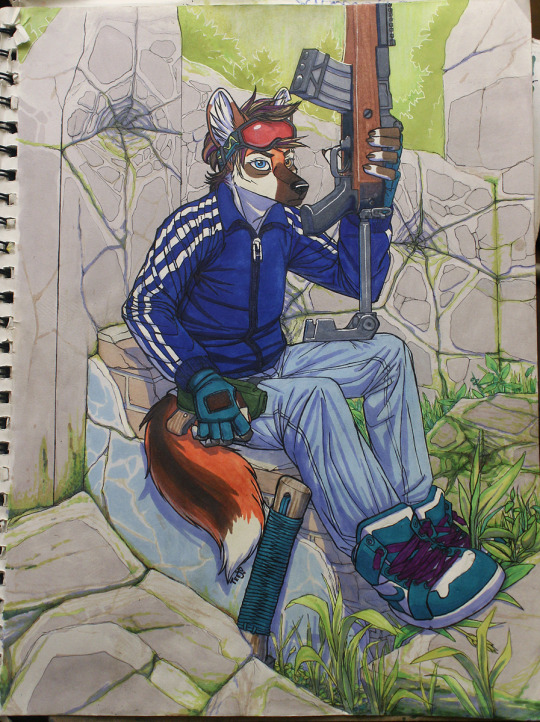
#art#furry#anthropomoprhic#maned wolf#gun#firearm#ruins#post apocalpytic#furry art#furry artist#markers#traditional art
14 notes
·
View notes
Text
breaking my silence, the painting reveal isnt going to be this cute moment of mike and will confessing to each other all lovingly and with pink bubbles around them ...
both mike and will's entire point in their s4 arc is that they regressed BIG TIME. im pretty sure pre s4 mike himself was at least heavily considering breaking up with el AND then confessing to will ... and they concluded the season being forced back into the closet.
so s5 byler is going to be dealing with ... checks my list
an apocalpytic hawkins ... in the 80s
a 'satanic panic, its the gays fault this all happened' mass hysteria bs from the residents of hawkins
mike dealing with wanting to fix things with el (he wants her in her life as a friend) and will wanting to be there for his sister.
dealing with suppressing his feelings for each other yet AGAIN after coming so close to not only accepting them but ACTING on them (honestly how far out the closet mike was pre-s4 will dictate how severe his IH is going to be portrayed in s5. its necessary to bring out the rest of the stuff in the subtext that they have likely been saving by keeping mike's sexuality and feelings for will hidden until now. and from what it seems from the line of 'it's not my fault you don't like girls' its going to be quite layered)
Byler was kept in the subtext til s5 bc they fully intend to explore both will's and mike's romance arc together, and when i say 'romance' i mean like ... all of it. so its not going to be as simple as them finally confessing. EVEN after the painting reveal there is still so much danger both from Hawkins AND the UD that they need to consider. and vecna is going to take full advantage of that
so yes Byler does play quite a central role this season ... for better or for worse man
62 notes
·
View notes
Text
And when that happens I close my eyes and listen to the roar and clatter of the world as it rushes by. We are rushing too. The wind is whipping past us. We are so brief. A one-day dandelion. A seedpod skittering across the ice. We are a feather falling from the wing of a bird. I don't know why it is given to us to be so mortal and to feel so much. It is a cruel trick, and glorious.
— Future Home of the Living God (Louise Erdrich)
#book quotes#science fiction#apocalpytic fiction#dystopian fiction#louise erdrich#future home of the living god#philosophy#humanity#life#living#death#mortality#unfairness#wonder
3 notes
·
View notes
Text
ChatGPT is surprsingly good at generating fiction (if generic) and "fanfics" to put it in a better word, it can take some wacky concepts and do some very good stuff with it, but it's completely unable to NOT give things a happy ending.
EVERYTHING has to have a Happy Ending or A Lesson. I asked it detailedly for a depressing post-apocalpytic scene and it kept throwing me stuff like "but the man believes there's a glimmer of hope at the end" and while I kept refining the prompt, now a fucking kid shows up with news from a settlement with food and water!!!!
No, you stupid bot, there's no hope left didn't you hear?
And if you explicitly ask it to write it something depressing with a bad end, it sucks or it's just a blurb. It's like it's programmed against bad feelings. I'm going to imagine it on the voice of Spongebob now.
21 notes
·
View notes